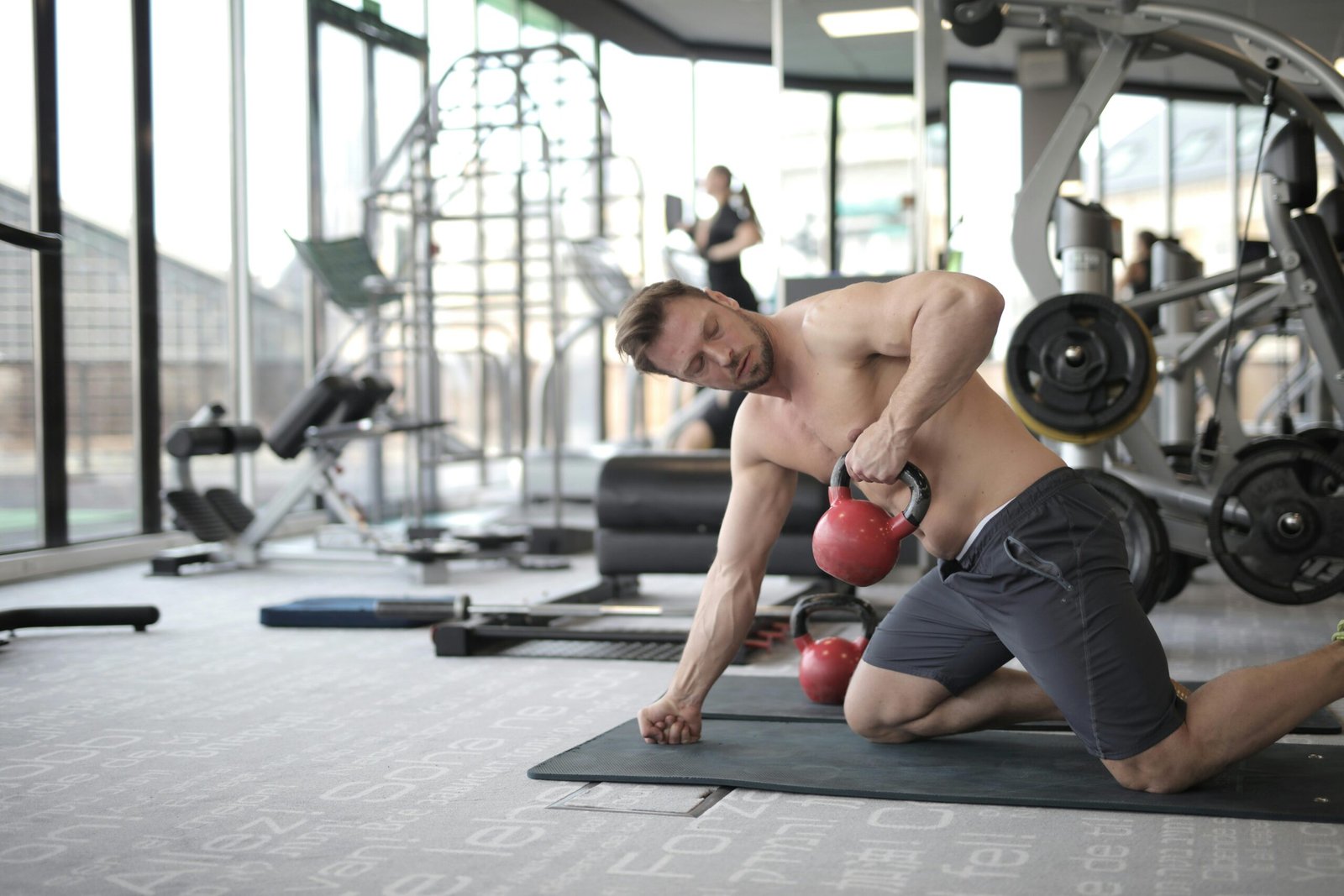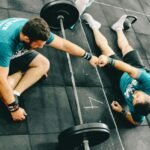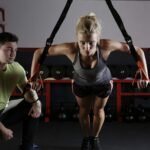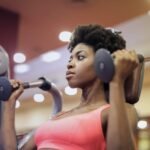Stepping into a gym for the first time can be an overwhelming experience, especially when confronted with a myriad of unfamiliar terms and equipment. To help you navigate this new environment with confidence, we’ve compiled a guide to essential gym terminology.
Whether you’re looking to understand the difference between reps and sets or you want to know what a deadlift is, this article will provide you with the knowledge you need.
Basic Gym Terminology
1. Reps (Repetitions)
Reps, short for repetitions, refer to the number of times you perform a specific exercise. For instance, if you lift a dumbbell ten times, you’ve completed ten reps. Reps are crucial because they determine the volume of work your muscles undergo. Generally, a higher number of reps with lower weight targets endurance, while lower reps with higher weight aim at building strength.
2. Sets
A set is a group of consecutive repetitions. For example, if you perform ten reps of an exercise, take a short break, and then perform another ten reps, you’ve completed two sets of ten reps each. Sets are structured to manage workload and recovery, with different goals in mind. For instance, performing three sets of 12 reps may focus on hypertrophy (muscle growth), while five sets of five reps might be aimed at increasing strength.
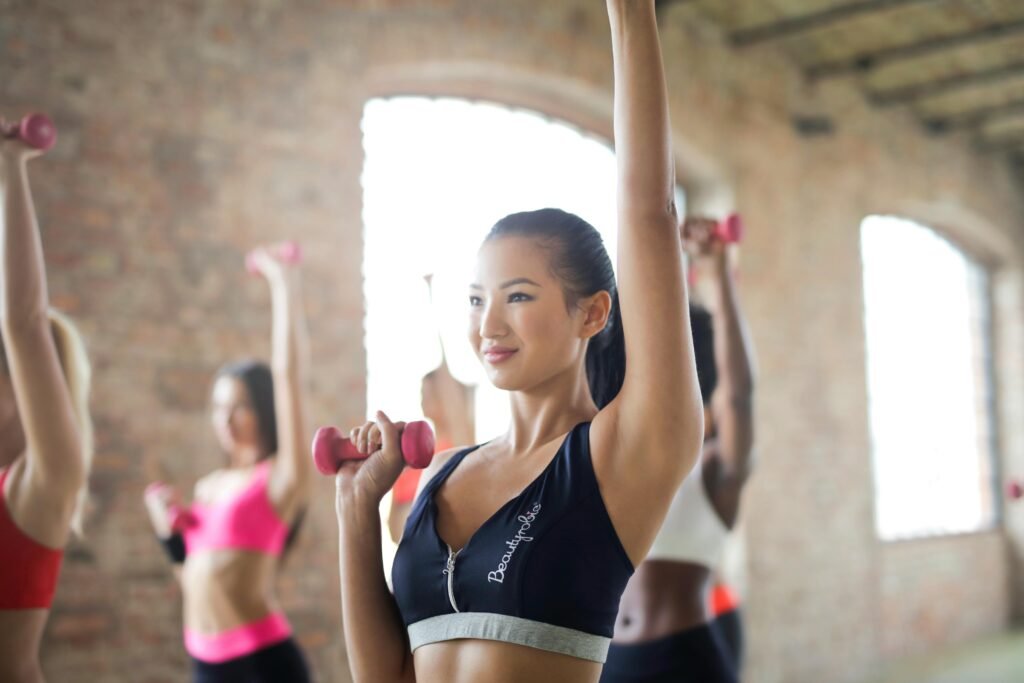
3. Warm-up
A warm-up is a series of light exercises designed to prepare your muscles and cardiovascular system for more intense physical activity. It typically includes activities like jogging, dynamic stretches, or light cardio. Warming up increases blood flow to the muscles, enhances flexibility, and reduces the risk of injury. It’s an essential part of any workout routine.
4. Cool-down
The cool-down phase is a period of light exercise and stretching after your main workout. It helps to gradually reduce your heart rate and prevent muscle stiffness. A proper cool-down aids in the removal of lactic acid from muscles, which can help reduce soreness and speed up recovery.
Types of Exercises
1. Cardiovascular Exercises (Cardio)
Cardio exercises are activities that increase your heart rate and improve the efficiency of your cardiovascular system. Examples include running, cycling, rowing, and using the elliptical machine. Cardio is beneficial for burning calories, improving heart health, and enhancing endurance. It’s recommended to incorporate at least 150 minutes of moderate-intensity or 75 minutes of high-intensity cardio per week.

2. Strength Training
Strength training, also known as resistance training, involves exercises that improve muscle strength and endurance. Common forms of strength training include weightlifting and bodyweight exercises like push-ups and pull-ups. Strength training helps increase muscle mass, boost metabolism, and strengthen bones. It’s an integral part of a balanced fitness regimen.
3. High-Intensity Interval Training (HIIT)
HIIT involves short bursts of intense exercise followed by brief periods of rest or low-intensity exercise. It’s an effective way to burn calories and improve cardiovascular fitness in a shorter amount of time. HIIT can also increase metabolic rate, meaning you’ll continue to burn calories even after the workout is finished.
Gym Equipment
1. Dumbbells
Dumbbells are short bars with weights at each end, used for a variety of strength training exercises. They come in different weights and can be adjusted in some cases. Dumbbells are versatile and can be used for both isolation exercises, which target specific muscles, and compound exercises, which work multiple muscle groups simultaneously.
2. Barbells
A barbell is a long bar with weights attached to each end. Barbells are used for exercises like squats, deadlifts, and bench presses. They allow for lifting heavier weights compared to dumbbells and are essential for building strength and muscle mass.
3. Kettlebells
Kettlebells are round weights with a handle on top, used for dynamic exercises that combine strength and cardio, such as kettlebell swings and Turkish get-ups. Kettlebells are excellent for functional training, which improves everyday movements and overall fitness.

4. Machines
Gym machines are designed to target specific muscle groups. Examples include the leg press, lat pulldown, and chest press machines. Machines provide a controlled range of motion, which can be beneficial for beginners learning proper form or for those recovering from injuries.
5. Free Weights
Free weights refer to any weights not attached to a machine, including dumbbells, barbells, and kettlebells. They allow for a greater range of motion and require more stabilisation, which can improve balance and coordination.
Common Exercises
1. Squat
The squat is a fundamental exercise that targets the thighs, hips, and buttocks. It involves bending the knees and lowering the body as if sitting back into a chair, then returning to a standing position. Squats can be performed with bodyweight, dumbbells, or a barbell. They are essential for building lower body strength and improving core stability.
2. Deadlift
The deadlift targets the back, legs, and core. It involves lifting a barbell from the ground to hip level while keeping the back straight and the core engaged. Deadlifts are effective for building overall body strength and enhancing functional fitness. Proper form is crucial to avoid injury, so it’s often recommended to start with lighter weights and progress gradually.
3. Bench Press
The bench press is a compound exercise that works the chest, shoulders, and triceps. It involves lying on a bench and pressing a barbell or dumbbells upwards. The bench press is a staple in strength training programmes for developing upper body strength and muscle mass.
4. Pull-Up
Pull-ups are an upper body exercise that targets the back, shoulders, and arms. They involve hanging from a bar and pulling the body upwards until the chin is above the bar. Pull-ups are a challenging bodyweight exercise that build significant upper body strength and endurance.
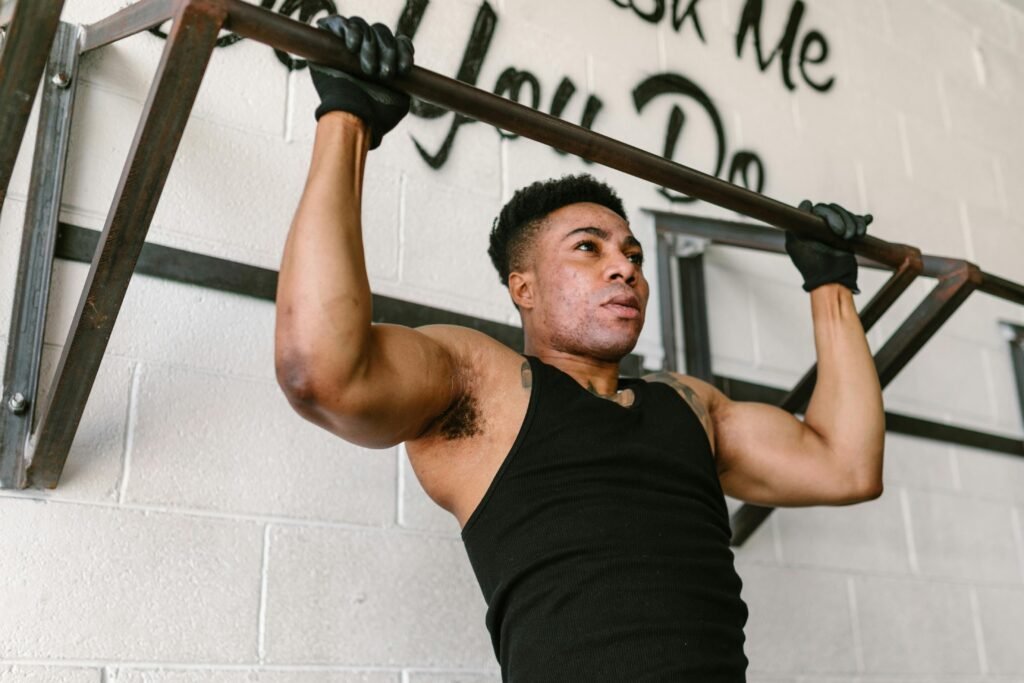
5. Plank
The plank is a core exercise that involves holding a push-up position with the body in a straight line. It helps to build core strength and stability. Planks engage multiple muscle groups, including the abs, back, and shoulders, making them an efficient exercise for core conditioning.
Training Concepts
1. Progressive Overload
Progressive overload is the gradual increase of stress placed on the body during exercise. It involves increasing the weight, frequency, or number of reps in your workouts to continually challenge your muscles. This concept is fundamental for muscle growth and strength gains. Without progressive overload, your body will adapt to the current workload, and progress will plateau.
2. Rest Periods
Rest periods are the breaks taken between sets or exercises. They allow your muscles to recover and prepare for the next set. The length of rest periods can vary depending on your fitness goals. Shorter rest periods (30-60 seconds) are typically used for endurance and hypertrophy, while longer rest periods (2-3 minutes) are used for strength training to allow full recovery between heavy sets.
3. Form
Form refers to the correct way to perform an exercise. Maintaining proper form is crucial to prevent injuries and ensure you’re effectively targeting the intended muscles. Good form involves proper alignment, controlled movements, and appropriate breathing techniques. It’s often beneficial to work with a trainer or use mirrors to check your form, especially when learning new exercises.
4. Supersets
A superset involves performing two exercises back-to-back with little to no rest in between. This technique can save time and increase the intensity of your workout. Supersets can target the same muscle group (e.g., bench press followed by push-ups) or opposing muscle groups (e.g., bicep curls followed by tricep dips).
5. Circuit Training
Circuit training involves performing a series of exercises in succession with minimal rest. It combines cardio and strength training for a full-body workout. Circuits can be customised to target specific fitness goals, such as fat loss, endurance, or muscle tone. They are an efficient way to maximise your workout in a limited time.
Nutrition and Recovery
1. Hydration
Staying hydrated is essential for optimal performance and recovery. It’s important to drink water before, during, and after your workout. Dehydration can lead to decreased performance, muscle cramps, and increased risk of injury. Aim to drink at least 2 litres of water daily, and more if you’re engaging in intense exercise.
2. Protein
Protein is a crucial nutrient for muscle repair and growth. Common sources include meat, fish, eggs, and plant-based options like beans and lentils. Consuming protein after your workout can help to repair muscle fibres and promote recovery. Aim for a balanced intake of protein throughout the day to support muscle maintenance and growth.
3. Carbohydrates
Carbohydrates provide the energy needed for intense workouts. Healthy sources include whole grains, fruits, and vegetables. Carbs replenish glycogen stores in muscles, which are depleted during exercise. Eating a combination of complex and simple carbohydrates can provide sustained energy for workouts and aid in recovery.
4. Rest and Sleep
Adequate rest and sleep are vital for recovery and muscle growth. Aim for 7-9 hours of sleep per night and include rest days in your training programme. Sleep is when the body repairs and builds muscle tissue, and rest days prevent overtraining, reduce the risk of injury, and improve overall performance.

Gym Etiquette
1. Clean Up
Always wipe down equipment after use and return weights to their proper place. This helps to maintain a clean and safe environment for everyone. Gyms can be busy places, and keeping the equipment tidy and sanitised ensures a positive experience for all members.
2. Respect Others
Respecting others at the gym is crucial for maintaining a positive environment. Share equipment during peak hours, avoid interrupting workouts for conversations, and use headphones for personal music or videos. Be mindful of personal space, follow gym rules, and use equipment properly to prevent damage and ensure availability for others. Keep noise levels down by controlling movements and vocal expressions. By following these guidelines, you contribute to a respectful and supportive gym atmosphere, enhancing the experience for everyone.
Conclusion
Understanding gym terminology is the first step towards feeling confident and empowered in your fitness journey. By familiarising yourself with these terms and concepts, you’ll be better equipped to navigate the gym, perform exercises correctly, and achieve your fitness goals. Remember, everyone starts somewhere, and gaining knowledge is a crucial part of the process. Stay consistent, be patient with yourself, and don’t hesitate to seek guidance from gym professionals if needed. With time and dedication, you’ll see the progress and reap the benefits of a healthier, stronger you. Happy training!

